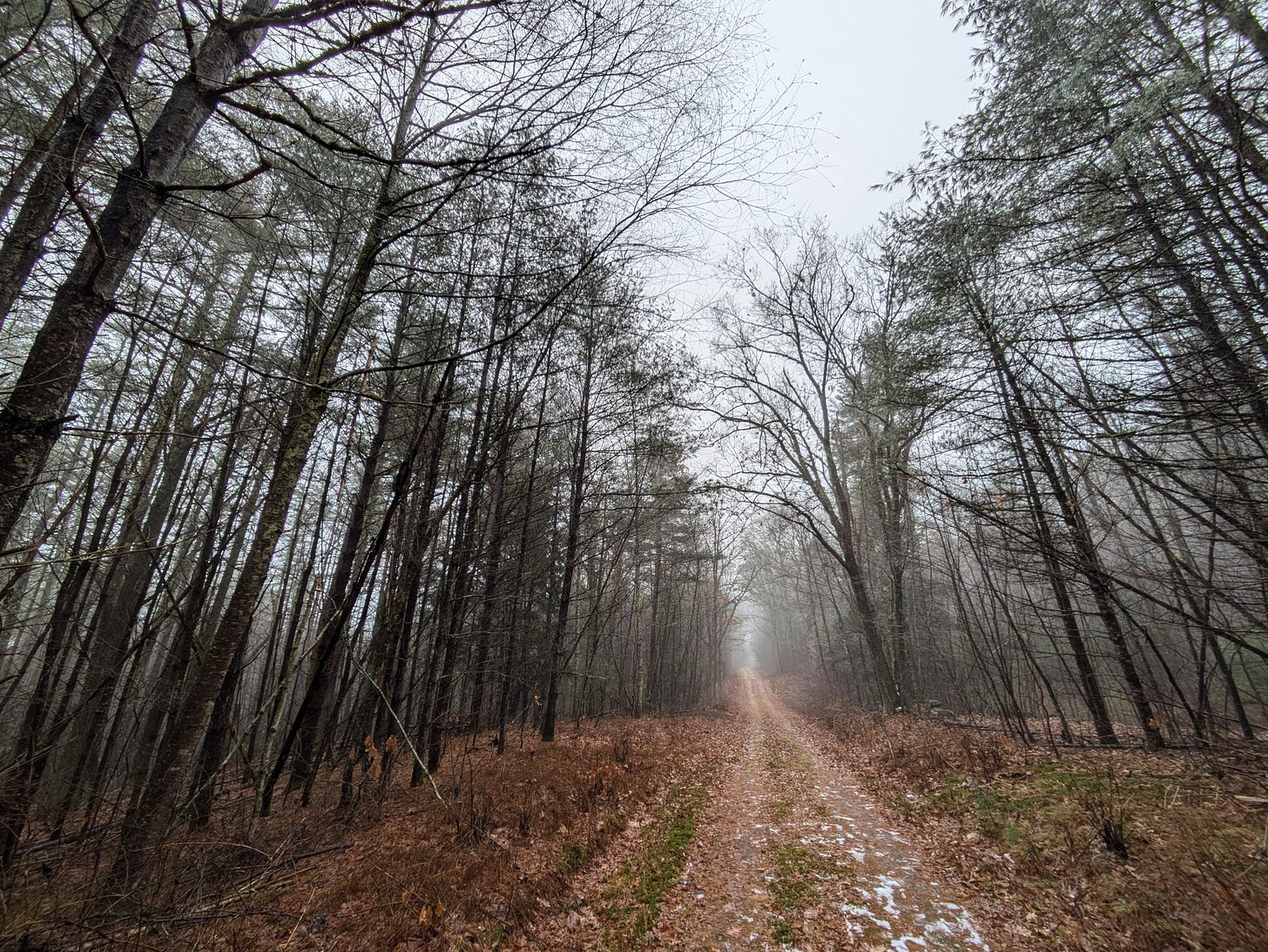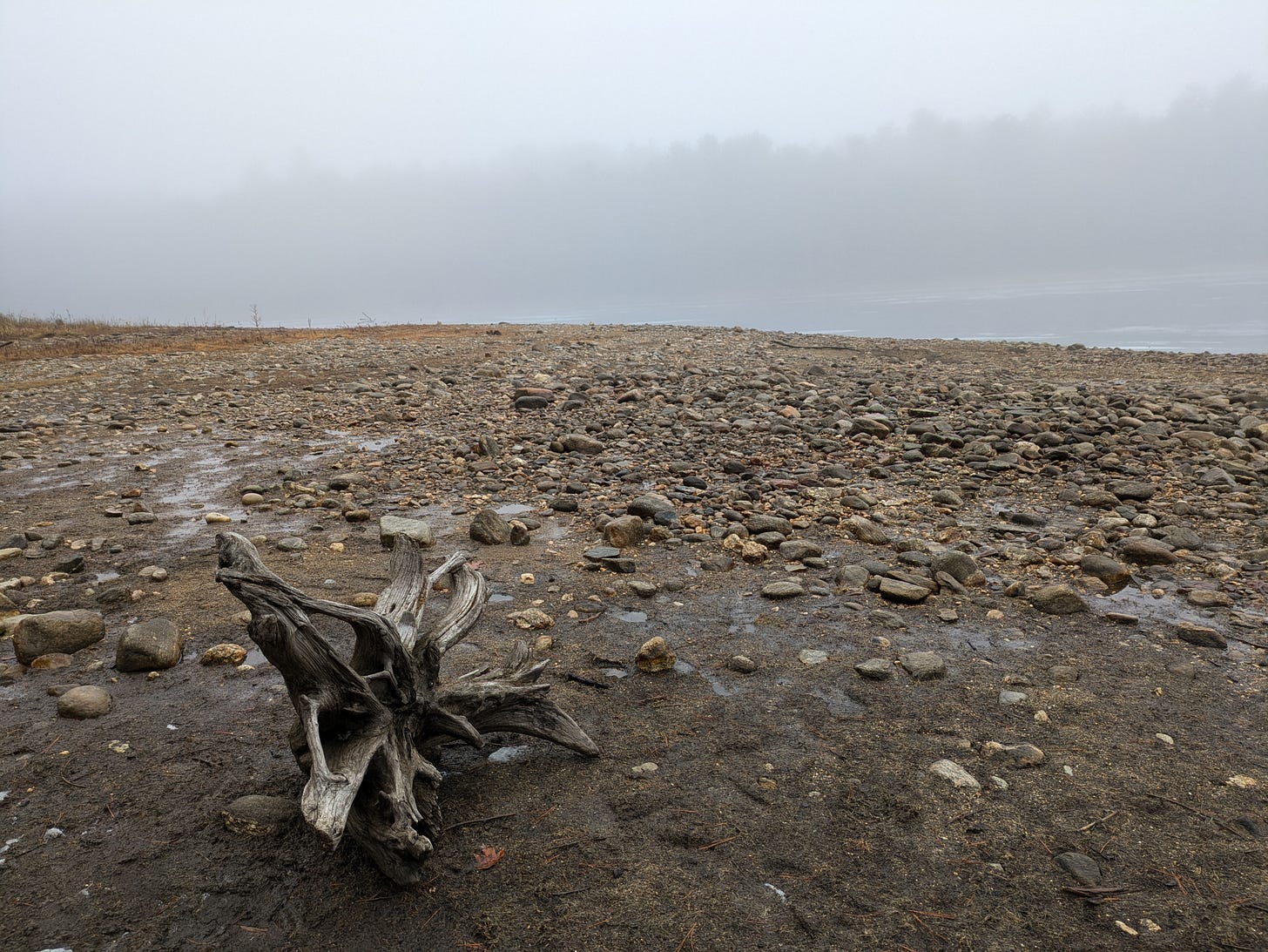Birding Western Mass: Cold impact on water, woodland, feeders, fields
Thoughts on Birding from the Quabbin to the Berkshires
Overflight
Bitter cold is coming this weekend and the following week. Highs will stay around 32 degrees, which is the temperature at which water freezes, which will make the landscape and waterscape inhospitable.
Such cold makes the essential elements of survival key means to find birds and intersect with their existence. I reached out to local top birder Larry Therrien and asked for his advice about how to bird differently in this weather. I’ve only birded here weekly-ish since 2019 (I first came out to visit about 2012, I think). Larry’s much more experienced in this kind of weather.
I numbered four kinds of birding experiences — water, open fields, woodlands and feeders.
Water: I asked what would still be open enough to attract birds to it. Indeed, Larry said, most places will be frozen.
A few places at the Quabbin will stay open, including Winsor Dam. I didn’t know Winsor would stay open; I will need to check that out — I think I’ve seen that the spillway for Winsor does stay thawed as well, and that link goes straight to it.
Larry also noted that extended cold spells freeze most of the Connecticut River. Bridges and dams will keep some open places, he said, which was a good reminder to look for the ones that are most productive. I will.
In last week’s issue, I took a look at the Holyoke Dam. It’s an enormous structure and I expect water to stay thawed downstream of it. Gulls, geese, ducks.
You could also look at Turner’s Falls, where the canal moves fast and might well stay thawed. If nowhere else, I suspect you might have luck downstream of the dam and at the power plant outflow, assuming they generate power there this week. Gulls, geese, ducks.
I suspect that there may be spots where the Connecticut runs fast through Springfield, and maybe where the other big rivers join it, like the Chicopee or the Westfield rivers, that may well stay open. I’ll probably look into these places a little and might offer an update for Monday.
I am looking at the map, and I suspect there are places on the small rivers that may stay open where the water runs hard. I might check out Shelburne and other places along the Deerfield; I know there’s places on the Hoosic and the Housatonic.
I don’t know about Lake Onota, the Stockbridge Bowl, Laurel Lake or the Congamond Lakes. Some open water may remain on those and other big lakes at their deepest points, or at places where water moves at their outflows or inflows.
Open land: Larry said not to expect much change in open areas.
Not much change means that the birding may be worth doing in our traveling family rooms that we call automobiles. I really prefer walking and birding, but that’s in part because I have the good fortune to be able to walk when I bird, and not everyone can. The open areas that allow cars — but where drivers should always be careful — include the East Meadows, the Arcadia Meadows, Aqua Vitae Road, the Honey Pot in Hadley, and the Longmeadow Flats. At the Honey Pot (along the levee) and the Longmeadow Flats (side trip to the sandbar) one can also bird the river.
A place you may not know you can drive and bird is Cow Bridge Road in Hatfield. This is another farm field complex, so the road may not be hard enough for sedans and even more robust vehicle drivers should proceed with caution. In this cold, the road should be firmer than usual, but it is sandy, so proceed with caution. Farmers work those fields for their livelihoods; stay off the crops.
Winter birds in meadow areas can be remarkably difficult to see, in that they are present in multitudes but exceptionally good at camouflage. Not true of geese — yes. Nor, to some degree, of harriers. But the horned larks, snow buntings and their rarer allies can be hard to see unless they pop up in their flocks to be visible against the sky or surrounding trees. I think the flocks look like sandpiper flocks (and have similar goals in mind — short distance collective relocation to confuse predators and find new food concentrations). It’s a good week to enjoy their beauty, by car or bike or on foot. If there were snow, it might push them to areas where snow cover is reduced, like roadsides, but meaningful snow is currently unlikely.
If you have time, be patient. Birds in the open are harder to see than you would expect.
Feeders concentrate abundance.
I’m writing this sitting where I have a good view of the feeder area; there are juncos in the space where I scatter seed. They’ve also taken water from the warmed birdbath I use. I recommend the water strongly; this week it will serve as well as seed as a means of concentrating interest in or near your yard, if you have one. If you don’t have a yard, but you want to see birds at feeders, I’d look to nature centers that do offer feeders. I only know of one, at Arcadia, but I’m sure there are plenty more that I just don’t happen to know about.
The cold won’t affect seed supply. It does intensify the overnight survival challenge. The long nights mean that daylight feeders (which is practically all birds in this season) must fast for the majority of the day-night cycle. You’ll see birds both eating and caching seeds and other food at this time of year. The first thing in the morning, birds must find food immediately to fill their stomachs. In the evening, they need to fill their stomachs to maximize their chance to survive the dark. Feeders are an excellent place to observe this behavior.
Woodland birds combine forces to discover food resources.
I’m actually surprised by how little research there is on multi-species mini-flocks, but part of that reason is the difficulty of studying such behaviors in the woods. Last year I did a narrow survey of research on the topic.
I cannot speak highly enough of the book, Birds in Winter. The issue of mini-flocks is examined extensively within, including the apparent motivations for such flocks and their likely impact on bird survival.
In my yard, the juncos are inclined this year to associate with each other only. Other years, they’ve mixed with white-throated sparrows liberally (and I am sure will again). I suspect I didn’t have the same weed success this year that the sparrows prefer — I am an indifferent lawnkeeper sorry-not-sorry — although it may be that others simply had better success.
When you’re in the woods this week, mini-flocks are likely to be present. If you see one bird, look for more. When you see more, watch their feeding behaviors, to see how they vary. I have read that chickadees feed lower when they’re in mini-flocks, and I think I’ve observed that as well, and the same may be true for kinglets.
If you read Amy Tan’s fine consideration of her experience of birds, she thinks about these flocks’ behaviors as well.
Focus
Scan. I’m getting back in the habit of scanning places steadily. I tend to arrive places and immediately look. Scanning is systematic looking. When I was on the Christmas count this year, a site leader described himself as “counting heads” in working his way along the Connecticut and tallying Canada geese. I used the same technique at Turner’s Falls on the Power Canal last weekend — I started at one end and swept my binoculars slowly, marking every bird as I went, and one of them was a snowy goose. When I was at Southwick a little before, the same method netted me a count of harriers (three!). I stood at a high point, where I could scan, and did scan in a 360-degree turn of my body. In that case, of course, I wasn’t looking from bird to bird, but instead marking every glassful of space.
In the cold, scanning is boring. But it’s what nets you whatever you’re looking to get out of birding, whether it’s catching a rarity you know has a high likelihood of being present, discovering your own rarity, or getting a sense of the scale of what you’re looking at in terms of thousands of geese or hundreds of larks.
Birdscape
Looking for ducks last week, I drove north to Gate 16 at the Quabbin. The gentleman I met at the parking lot said he had common mergansers and hooded mergansers; I set out following his directions to the water. As you can see in the attached image, I immediately failed to follow instructions, turned left when I should have turned right, then reversed direction.
Do this the right way: Park at 16, then go down the narrow path, turn right at the T on the dirt road, then look for chances to follow tracks left toward the water. I turned left early at a fairly obscure path; you could wait for a better road if you had the patience. Then you can either walk along the shore for a while or come back up the hill.
This is the easiest gate I have used at the Quabbin with the possible exception of Gate 35. The distance is really manageable but beautiful.
If you prefer the woods to the water, stay on the dirt road. You can’t ride a bike in the Quabbin but if you could it would be a fairly good road to ride, with some steepness. But you can’t. So don’t.
The water is narrow fingers down there. (Gate 16 is at the tip of the Quabbin’s “thumb.”) Today, the water is low, and the shore is all sand and the fist-sized rocks that I believe have been tumbled by glaciers and that line much of the Quabbin shore. There’s a fair amount of frozen mud and gravel.
It was raining and the ducks did not cooperate by showing up where the open water was and where the gentleman had seen them. I did have a snow bunting in the mist but I didn’t see it; I only heard it; Merlin ID’d it for me and then I messaged Larry, who confirmed it. When you use Merlin you should always confirm by another method before you record your sighting as citizen science.
Even though the birds were limited it was a phenomenally beautiful place. As my acquaintance said, “It was like walking into milk.”
Bird Books and Whistles
I have not decided whether to invest in the apparently wonderful new Gulls book. If you’re interested in the topic, and you love a Car Talk-style geekout as much as I do, check out the American Birding Association podcast episode with author Amar Ayyash. I find the podcast series to be uneven but when it’s good it’s the absolute best, and this episode is top quality.






